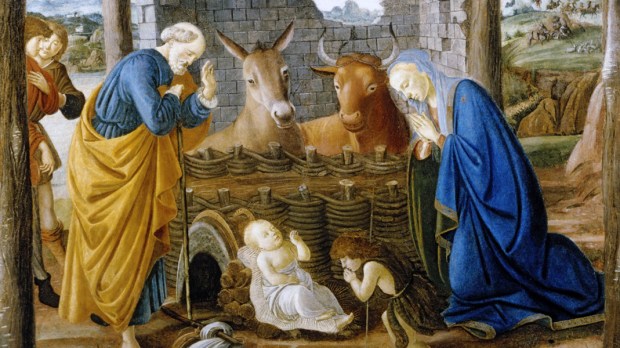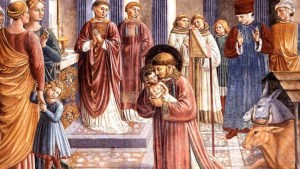St. Francis had a special devotion to the Christ Child, and many believe he is the one responsible for creating the first live Nativity scene.
His inspiration came after traveling to the Holy Land and seeing the exact site of Christ’s birth. The poverty of it all deeply impacted Francis and was a particular element that he wanted to honor on Christmas.
St. Francis made sure every element was there, including live animals and a manger placed in their midst.
A manger is a feeding trough for animals, and was likely the cleanest place in the stable where the Virgin Mary could place the baby Jesus when he was born.
To accentuate the symbolism of the manger, St. Francis went so far as to request Mass to be celebrated on top of the manger.
Pope Benedict XVI highlighted the profound symbolism of this action in a Christmas homily in 2011:
Francis arranged for Mass to be celebrated on the manger that stood between the ox and the ass (cf. 1 Celano 85; Fonti 469). Later, an altar was built over this manger, so that where animals had once fed on hay, men could now receive the flesh of the spotless lamb Jesus Christ, for the salvation of soul and body.
St. Cyril of Alexandria in the 5th century also comments on the connection between the manger and the Eucharist, “The setting of Christ’s birth points us to the Eucharist. Since through sin man becomes like the beasts, Christ lies in the trough where animals feed, offering them, not hay, but his own body as life-giving bread.”
What St. Francis did was full of symbolism, and it struck his heart to receive the body of Jesus in a place that looked similar to where Jesus first lay his head.


